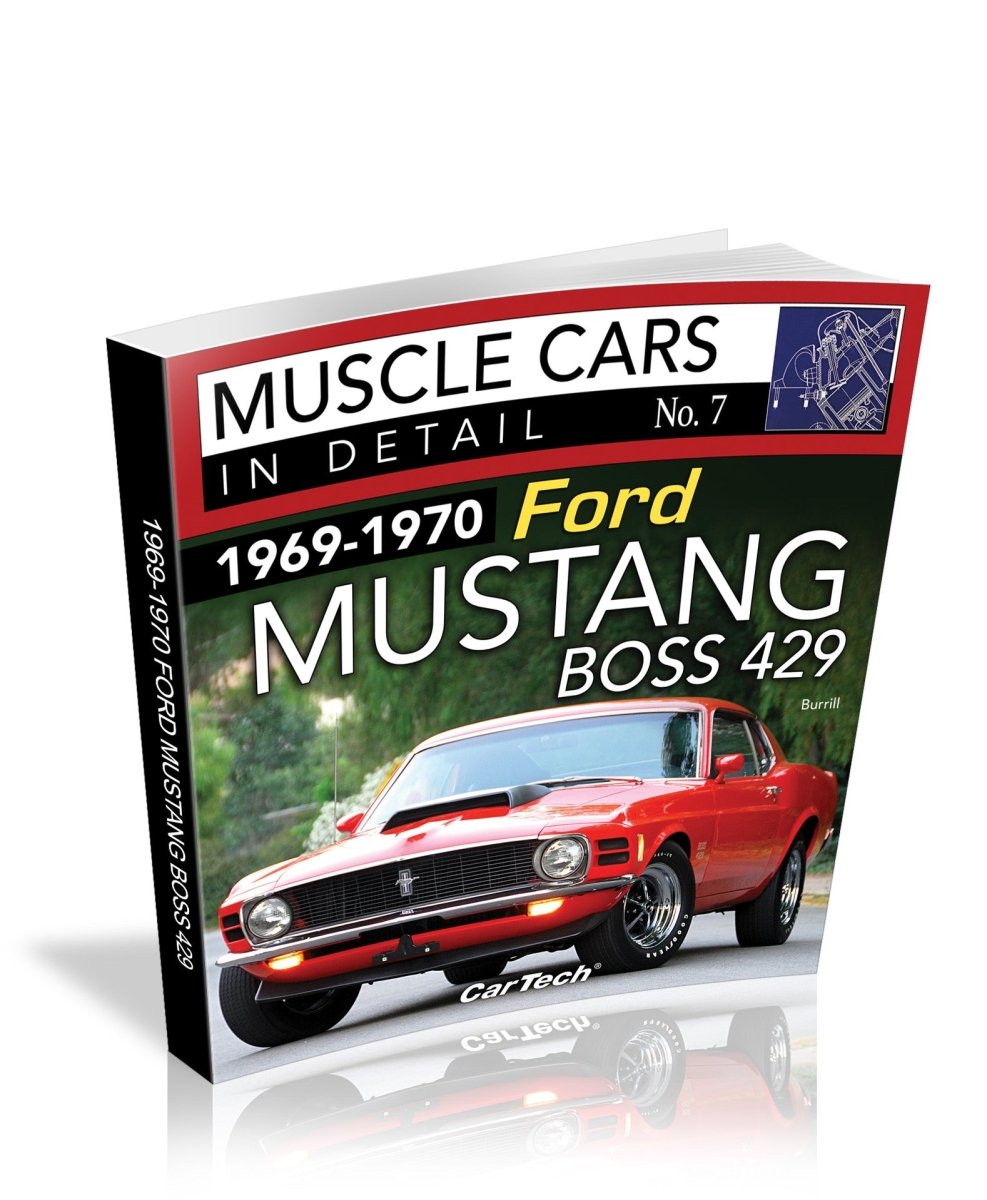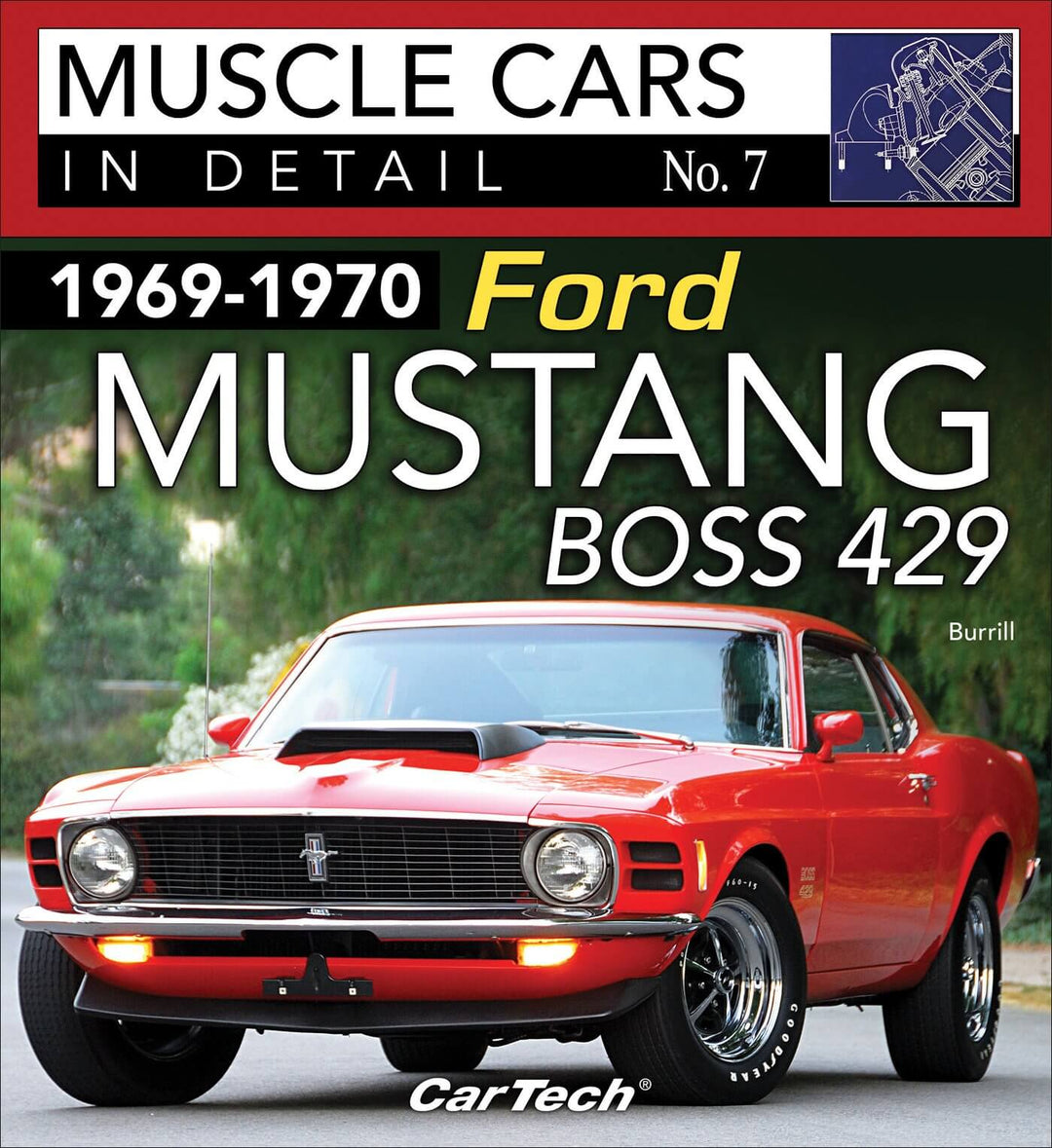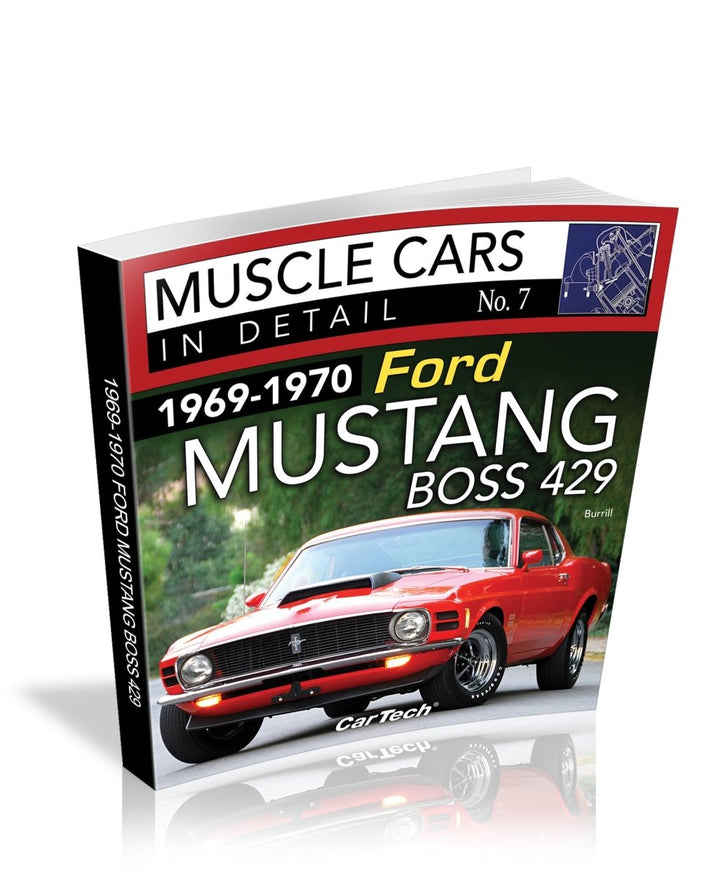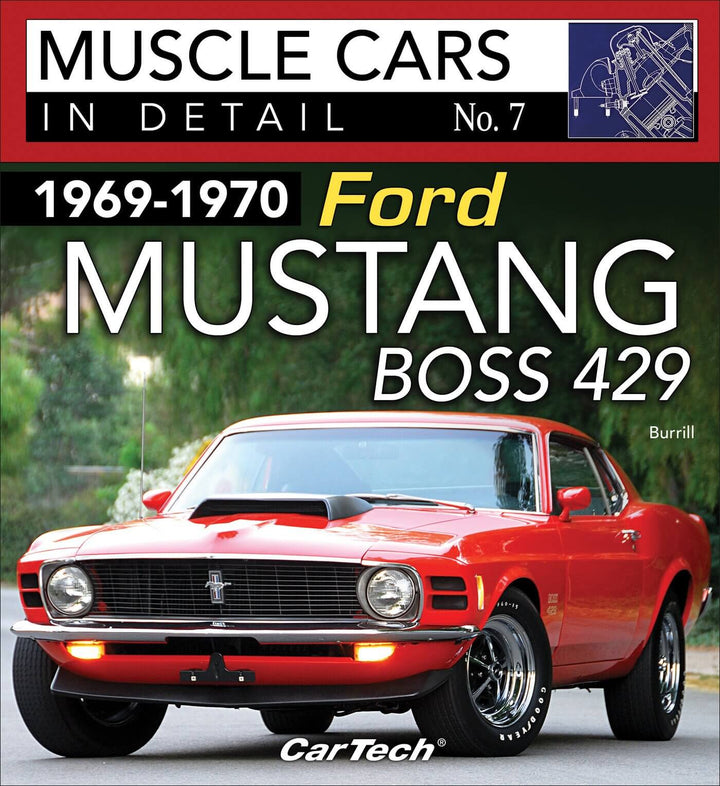Inspect the 1969-1970 Ford Mustang Boss 429 from bumper to bumper, including the storied Boss 429 engine, 4-speed Toploader transmission, interior, paint codes, options, and more.
Author Dan Burrill collaborated with Boss 429 expert Denny Aldridge to give you the straight story of developing this monumental engine, engineering the components and parts to fit the engine and chassis, and assembling the cars.
The Boss 429 has its roots in NASCAR racing. Chrysler’s 426 Hemi was dominating NASCAR competition, and Ford’s attempt to race the 427 SOHC “Cammer” had failed. By 1967, Ford had enough, and the Boss 429 was the answer. So, Ford and its engineers, with the help of Holman-Moody, returned to the drawing board to create a clean-slate big-block engine to beat the dominant Hemi.
The Mustang fastback chassis was the obvious choice for the engine, but the Boss 429 had an enormous footprint, so it wouldn’t easily fit in the engine bay. Although it would have been far easier to install the engine in the full-size Galaxie, these cars were not as popular or widely revered as the Mustang. Ford and specialty car builder Kar-Kraft faced the daunting task of modifying the Mustang fastback to create what’s considered to be Ford’s greatest big-block muscle car, the Boss 429. This is the story of the car, its equipment, and manufacturing history.
Each volume in the Muscle Cars In Detail series provides an introduction and historical overview, an explanation of the design and concepts involved in creating the car, a look at marketing and promotion, an in-depth study of all hardware and available options, and an examination of where the car is on the market today. Also included are paint and option codes, VIN and build tag decoders, as well as production numbers.
Dedication
Acknowledgments
Introduction
Chapter 1: The Boss Project and Vehicle Identification
Vehicle and Engine Identification
Selecting the Mustang
Kar-Kraft: Ford’s Factory Speed Shop
Selling the Boss 429 Mustang
Limited Options List
Chapter 2: The Engine
Engine Variations
Rotating Assembly
Solid Lifter Conversion
Intake and Exhaust
Dry-Deck Cylinder Heads
Toploader 4-Speed Transmission
Chapter 3: Chassis and Suspension
Assembly Line Program
Suspension
Rear Suspension
Wheels
Chapter 4: In Competition
Engine Development
Total Performance
Drag Racing
Chapter 5: Dealer Options and Model Year Changes
Accessories and Options
Model Year Changes
Appendix: Boss 429 Details and Specifications





